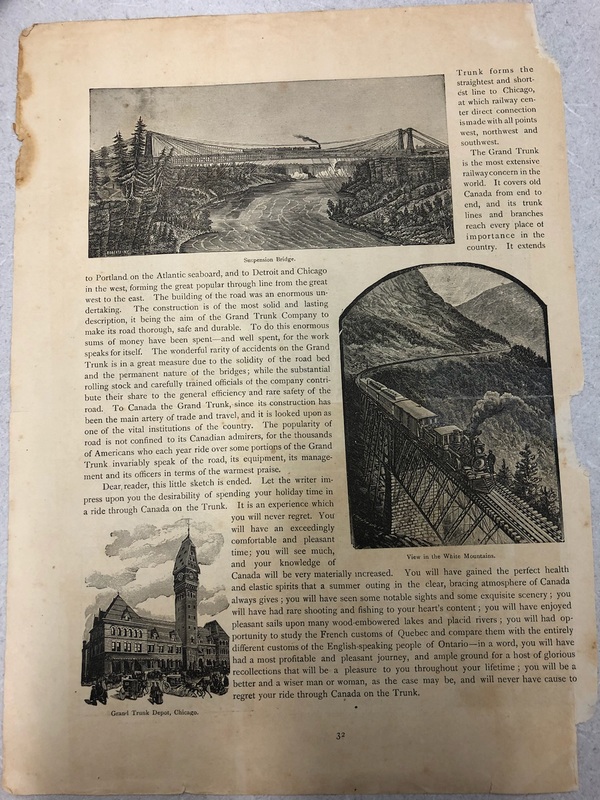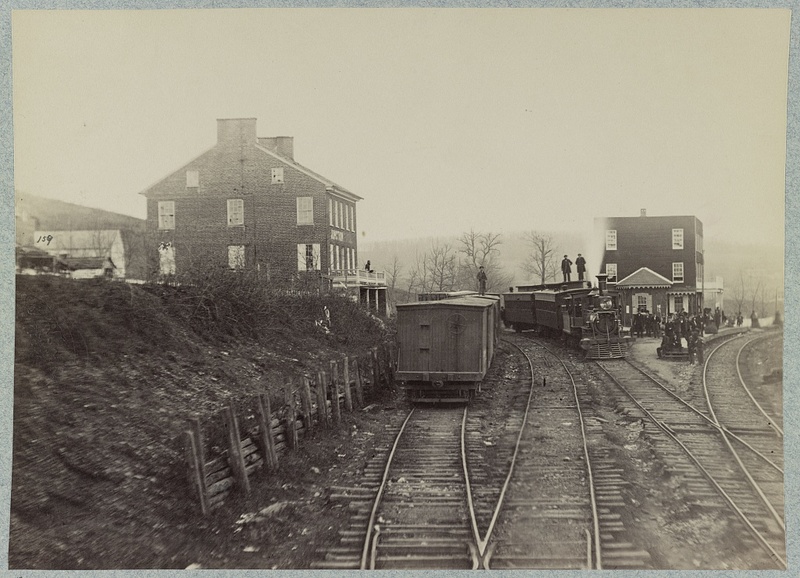Railroads
Before the Civil War, railroads were used for entertainment. For example, the Grand Trunk Railroad was a recreational railway used by tourists traveling from America to Canada. This railroad allowed tourists to explore Canada, and the expedition provided a sight-seeing experience for all its customers. This railroad was reputable and soon became popular. An advertisement describing the Grand Trunk Railroad praises the reliability and functionality of the railway. According to the newspaper article in John Kell’s scrapbook (1860-1951), “the popularity of [the] road is not confined to its Canadian admirers, for thousands of Americans invariably speak of the road, it’s equipment, its management, and its officers in terms of the warmest praise.” This puffery exaggerates the greatness of the Grand Trunk Railroad; however, railroads were soon used for business purposes instead of entertainment. An example of a business focused railway station includes Hanover Junction, Pennsylvania. This popular train station was operated during the Siege of Petersburg, and it became a catalyst for the Union’s advancement in the Civil War. In the beginning of the war, “Food and forage, guns and ammunition—all of the supplies and services necessary to conduct a prolonged siege—had to be brought by water to the Federal beachhead at City Point and distributed along the rapidly extending lines of the entrenchments” (Sylvester 310). This was inefficient and risky since the battle was being fought in the area. As a result, “Grant ordered the construction of a railroad behind the front line to facilitate the movement of supplies and personnel” (Sylvester 310). The reconstruction of the railroads at Hanover Junction allowed for safer and more efficient transportation. In fact, railroads were used to move supplies and troops between Hanover Junction and Petersburg, Virginia during the siege. Often, Lincoln would visit the train station to oversee Grant’s operations. On one occasion, Lincoln joined Grant in riding the railroad into war. According to Sylvester, “The strain of the war and the recent elections were having their effect on the President, and it was at City Point where [Lincoln] had his most prophetic of dreams—that of his own assassination” (Sylvester 314). This dream foreshadowed Lincoln’s death; however, Lincoln was able to oversee a Union victory at Petersburg. While the railroads were used to transport resources, war ships were used to block them.
Works Cited
Sylvester, Robert Bruce. “The U.S. Military Railroad and the Siege of Petersburg.” Civil War History, vol. 10, no. 3, Sept. 1964, pp. 309–316. EBSCOhost, proxy-remote.galib.uga.edu/login?url=http://search.ebscohost.com/login.aspx?direct=true&db=31h&AN=45890516&site=eds-live.
Appendix A
Hanover Junction, Pa. August. [Photographed 1863, printed between 1880 and 1889] Photograph. Retrieved from the Library of Congress, <www.loc.gov/item/2014646004/>.
Kell, John M. John McIntosh Kell scrapbook, 1860-1951. Article. Retrieved from the Special Collections Library University of Georgia, <http://hmfa.libs.uga.edu/hmfa/view?docId=ead/ms2361-ead.xml;query=ships;brand=default>.

